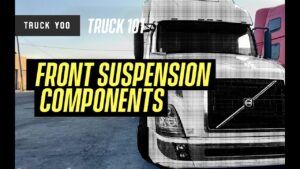Sales Forecasting of Truck Components Using Artificial Neural Networks
Truck Components Using Artificial Neural Networks
Various methods of machine learning are used in the sales forecasting of truck components. In this study, we used Artificial Neural Network algorithms to forecast the sales of Volvo Truck components such as engine brake, front rims, instrument cluster display, wheelbase, tank cover, auxiliary radiator, and more. These models are divided into 12 families and are evaluated on a weekly basis. The sales data for these truck components are obtained from the Digital Transformation department of Volvo Trucks group.
We start by creating a dataset from the sales data of truck components. This dataset is comprised of over 12000 features that represent truck components. We choose core truck components and discard features that have no sales or have the highest number of null values. We then transform the truck sales dataset into a supervised learning dataset. The supervised learning dataset uses previous time steps as inputs and new time steps as output variables.
This data is important for determining trends and maximizing inventory levels. For instance, an incredibly high number of trucks were manufactured with a specific component in mind. In fact, a truck component can consist of 11,000 parts. This means that different customers often choose different parts depending on multiple factors. Because of this, it is difficult to predict what each individual customer will choose and to keep enough stock on hand. Sales forecasting of truck components can help identify sales trends and optimize storage levels.

Sales Forecasting of Truck Components Using Artificial Neural Networks
A long-term forecast should be developed by using an expert panel. Experts should be neutral and forecast the market growth over a certain period. Expert opinion is often very close to reality. In a long-term sales forecast, experts should look at the past history of the market and forecast the future growth of the product. Then, they should compare these estimates to the actual market data. The results should show the trends for the component supplier.
To develop a more accurate forecast, managers must identify trends and understand the rate at which they change. Depending on the stage in which the product is in the life cycle, the forecasting technique should be adjusted accordingly. A forecast based on historical data is useless if it is applied for a completely new product. For instance, a truck component that is used on a daily basis will not be accurate at all times.
When generating a sales forecast, managers should consider the history of the business. If there are no sales in the previous month, the forecaster should use past sales data to develop a forecast. By analyzing past sales data, the forecaster can determine the amount of hamburger meat to order for the next month. After determining the rate of change, the forecaster can apply mathematical techniques to create a projection of the business.